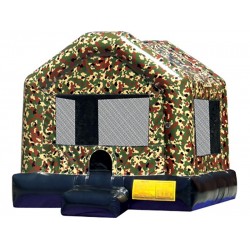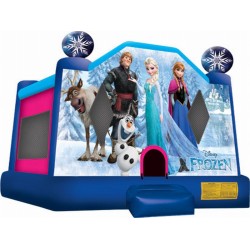What Are the Age Limits for Using Jumping Castles?

Jumping castles are a popular feature at parties and events, offering fun and excitement for children of all ages. However, to ensure safety and prevent accidents, it's important to understand the recommended age limits for using jumping castles. Age limits can vary depending on the size, design, and intended use of the jumping castle. Here's what you need to know:
1. Age-Specific Designs
Jumping castles are often designed with specific age groups in mind. Manufacturers typically categorize them as follows:
- Toddlers (Ages 1-3): Smaller jumping castles with lower walls and soft, cushioned surfaces are designed specifically for toddlers. These castles are safe for very young children, providing a gentle bouncing experience.
- Young Children (Ages 4-7): Jumping castles for this age group are slightly larger and may feature additional elements like small slides or obstacles. They are designed to accommodate the energetic play of young children.
- Older Children (Ages 8-12): Larger jumping castles with more complex designs, including higher walls and additional features like climbing walls, are suitable for older children who are more physically active.
- Teens and Adults: Some jumping castles are specifically designed to accommodate teenagers and adults, featuring reinforced materials and larger spaces to support the increased weight and activity levels of older users.
2. Safety Considerations
Age limits are established primarily for safety reasons. Here are some key safety considerations:
- Size and Strength: Jumping castles designed for younger children may not be able to safely support the weight and strength of older children or adults. Exceeding age recommendations can lead to structural damage or accidents.
- Behavior Differences: Younger children often play more gently, while older children and adults may engage in more vigorous activity. Mixing age groups can lead to collisions and injuries, particularly if younger children are involved.
- Supervision Requirements: Different age groups require different levels of supervision. Toddlers, for example, need constant, close supervision, while older children may be more independent but still require monitoring.
3. Mixed-Age Group Events
When hosting an event with children of varying ages, it's important to manage the use of the jumping castle appropriately:
- Separate Play Sessions: If possible, schedule separate play times for different age groups to prevent accidents and ensure that all children can enjoy the jumping castle safely.
- Age-Appropriate Rules: Establish clear rules based on the age group using the castle. For instance, younger children may be required to bounce more gently, while older children can enjoy more active play.
- Supervision Strategy: Ensure that supervisors are aware of the age limits and enforce them strictly to maintain a safe environment for all participants.
4. Consult with Rental Companies
If you’re renting a jumping castle for an event, consult with the rental company regarding age limits and safety guidelines. Reputable companies will provide detailed information on the appropriate age groups for each jumping castle model they offer, ensuring you select the right one for your event.
Conclusion
Understanding the age limits for using jumping castles is essential for ensuring a safe and enjoyable experience for all participants. By selecting the right jumping castle for the age group at your event and following recommended safety guidelines, you can minimize the risk of accidents and maximize the fun. Whether you're hosting a party for toddlers, young children, or even adults, there's a jumping castle that can provide the perfect entertainment while keeping everyone safe.




Leave a Comment